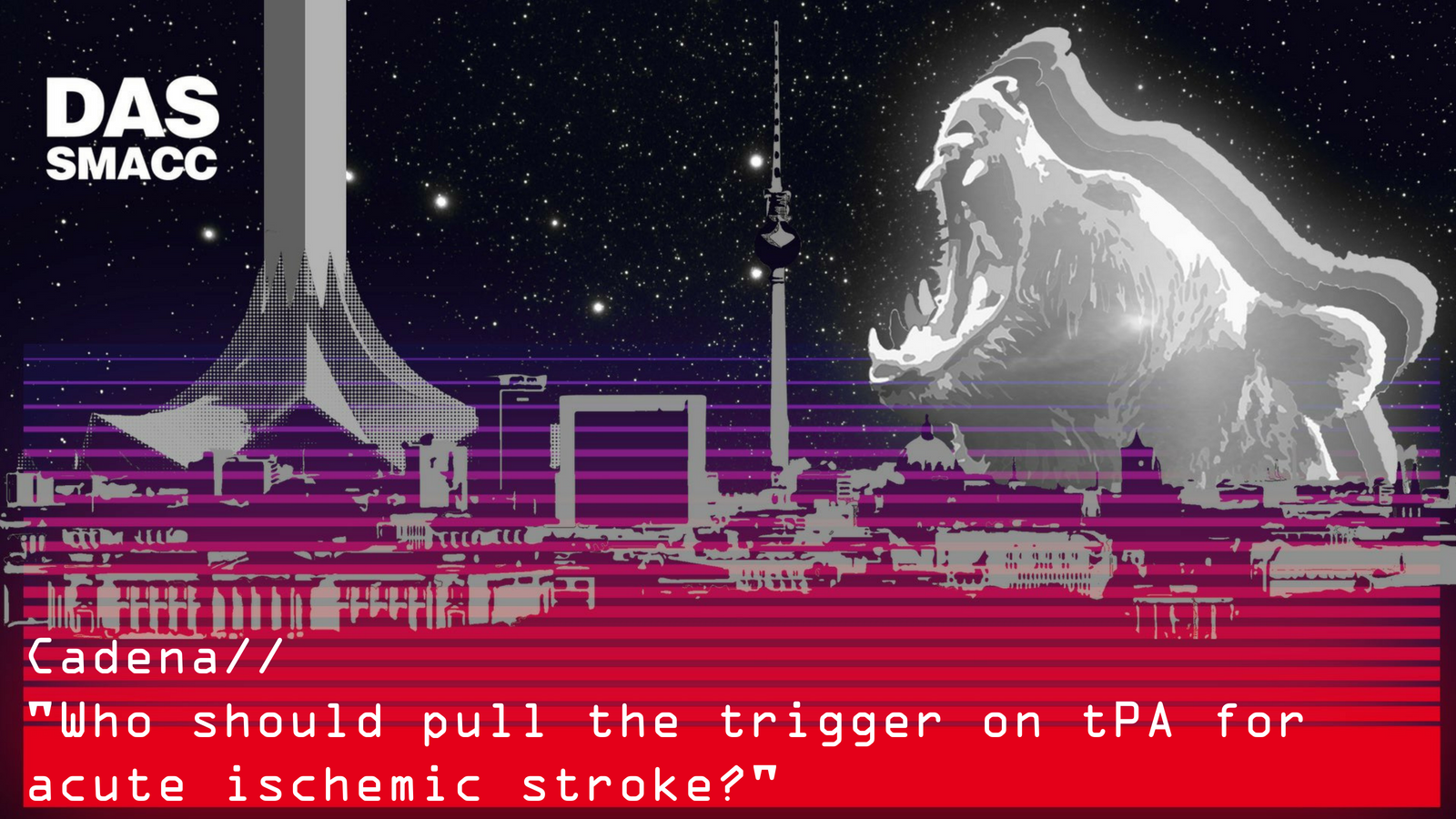The door to needle time for acute stroke in Critical Care is a key variable when striving for good outcomes.
Rhonda Cadena answers the question –
Who should pull the trigger on tPA for acute ischemic stroke?
Medical management of acute strokes has changed dramatically over the years. We used to rely on clinical exams for diagnosis, prescribe strange medications and undertake interventions that were scary! This has changed in recent times.
We have now evolved to advanced imaging techniques, new medications and interventions including endovascular treatments. These advances have dramatically increased the likelihood of positive outcomes in stroke patients.
The new problem coming to light is time. Existing modern treatments achieve what they are supposed to, but delays in stroke patients accessing treatment leads to deficits and less chance of full recovery.
The process as it currently exists can take time. A patient will notice symptoms. They then call emergency service. An ambulance is dispatched, the patient undergoes an initial assessment and is then transferred to the hospital.
Here they will be triaged, connected to monitoring, have bloods drawn, have a history taken, be examined… all taking time! Stroke guidelines say the door to treatment time should be 60 minutes or less.
Rhonda explains that the focus should be on reducing the time that the process takes.
Furthermore, she highlights that most of the time savings should occur before the patient hits the door. That is in the pre-hospital setting. We should be focusing on emergent treatment in the pre-hospital period.
Rhonda runs through practical examples of time saving techniques utilising technology and a few simple changes to processes to cut time and improve outcomes. The basics of tPA are spelled out and Rhonda identifies how we can expedite the process along the patient’s early treatment journey.
So who pulls the trigger? Rhonda explains it does not matter! So long as we are saving time in the pre-hospital period, the door to needle time for acute stroke can be reduced and outcomes improved.
Door to needle time for acute stroke in Critical Care by Rhonda Cadena
For more like this, head to our podcast page. #CodaPodcast
Rhonda Cadena, MD
Rhonda Cadena M.D., is a board certified Neurointensivist and Emergency Physician at the University of North Carolina Hospital in Chapel Hill. She is an Associate Professor in the Departments of Neurology, Neurosurgery, and Emergency Medicine and is the fellowship director of the Neurocritical Care fellowship at UNC. Clinical Interests include: Neurocritical care, stroke, neurological emergencies, and education.Education/Training: MD, Southern Illinois University School of Medicine; Residency, Emergency Medicine University of Cincinnati; Fellowship, Neurocritical Care and Stroke, University of Cincinnati.





